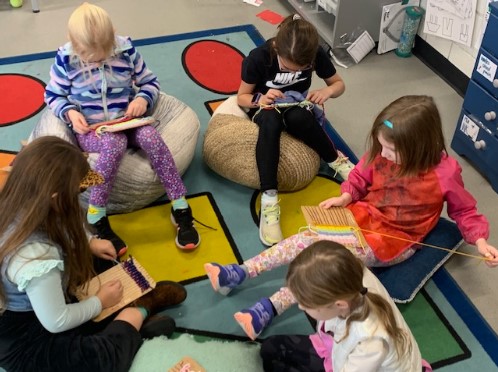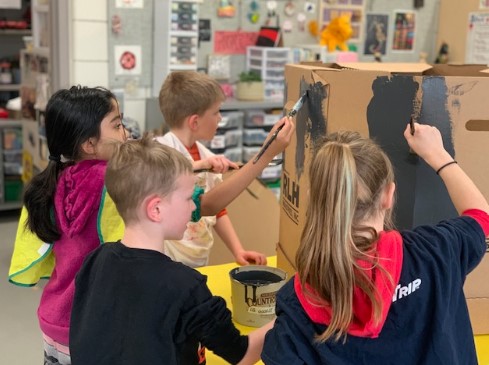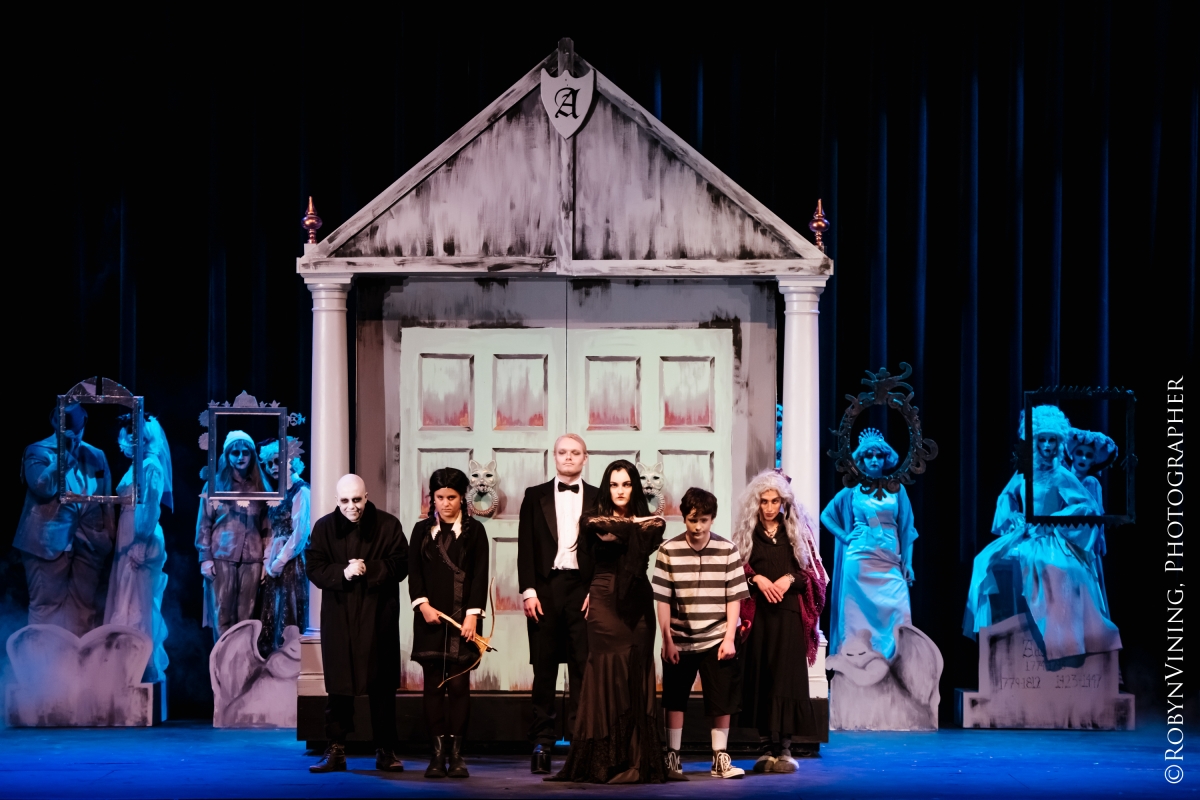
This article is the third in a series of articles on Innovation presented by the DPI’s Teaching and Learning Team. Special thanks for help with this article go to Chris Gleason, Arts and Creativity Consultant.
Access previous articles in our Innovation Series:
Pathways to Hope: Innovation Starts Right Where You Are
Educators and Students Are Clamoring for Change and Making It Happen
Visual Arts, Music, Theater, Digital Media, Dance. For many students in Wisconsin, arts programs are not “extras,” but rather an essential way to learn about themselves and the world around them. The arts are key to helping foster student resilience, engagement, and personal growth. Embedded in the arts is a sense of exploration, discovery, and play. It is here that the arts cultivate creativity, and often, demonstrate innovative teaching and thinking.
Here we highlight the work of arts educators across the state who are developing and using creative, innovative approaches to learning and art-making. These teachers have a lot to teach not only their students, but their fellow educators, about creativity, learning, and joy.
Giving Students Voice and Choice to Focus on Process Not Product
Visual Arts teacher Julie Purney, Pewaukee Lake Elementary School
After Julie Purney from the Pewaukee School District took a seminar in TAB (Teaching for Artistic Behavior) methodology, she realized that, “[in] my traditional teaching methods… I came up with the problem and my students solved it. In TAB, my students design their own problems, solutions, and evaluate their own success.”

“My TAB classroom is set up in stations/centers. I open one center at a time beginning the first day of school. I teach what is in the station, share some resources within that center, and let the artists do what we do: explore and play! Stations are rounded out in successive weeks by experiencing art by artists that work in similar materials, and short skill-builder lessons that teach a specific skill or idea with media in that center.”
“If you come into my classroom, it will appear to be an incredibly chaotic environment. Children are moving all around the room, selecting and using different supplies in different ways. Some artists are working independently, while others are working with partner(s). Students are given the opportunity to choose what materials they want to work with. One of my roles is as a facilitator, making sure artists have the supplies they need. I confer with almost every student within their time in the studio. I question choices, encourage reflection, and guide students to problem-solve in their own artistic journey.”

Purney has seen students working in ways that are vastly different to how they worked in her more traditional classroom. The differences have been not only in the creative process, but also creative output for all students, especially those with special needs. “They find success on their own timelines with their own abilities. TAB has given my students the voice and choice I had always wanted them to have. Even my K5 students are working in the studio ‘as artists DO!’ They make personal choices, collaborate, explore and play with art media.”
There Are Many Ways To Be a Musician
Band Department Head Margaret Zeidel, Northstar Middle School, Eau Claire
Margaret Zeidel has made it her mission to find ways to engage every middle school student in making music, regardless of whether they are interested in “traditional” band instruments or music. While Zeidel still teaches traditional concert band, she also pushes the innovation envelope in her classroom by teaching a middle school rock band.
Zeidel also incorporates contemporary music through “Pop Warm-Ups.” Each class session begins with a 5-10 minute pop warm up. “Musicians… [play] scales, lip slurs, rhythmic exercises, and melodic fragments over a track. The idea behind these warm-ups is that this is something we do every day with our kids, [and] we may as well make them relevant. With my 6th grade band members, we start every class with buzzing along to a student selected song. The students first listen to the song, then buzz it, and then play it on their instrument.”
“[When I started using Modern Band Pedagogy] kids came out of the woodwork who maybe are not the best at their band instrument, but are incredible at a modern band instrument (such as guitar), or whose musical abilities shine when you put a DAW (digital audio workstation) in front of them. It is a goal of mine to catch these wonderful musicians who value and love music, but not in the way we [traditionally] offer it.”
Zeidel hopes that the next generation of music teachers embrace these changes as well. As for her practice, Zeidel looks forward to incorporating more rap and hip hop in her classrooms and curriculum.
When We Give Students the Tools, They Thrive
Theatre Educator Colleen Jaskulski, Wauwatosa East High School
At Wauwatosa East, theatre classes are offered as electives during the day, and not exclusively as clubs or after-school activities. The results have been overwhelming. According to theatre teacher Colleen Jaskulski, “I have more students enrolled in theatre classes now than ever before, and although it makes lesson planning more difficult, it is exciting that interest in the art form and the work we’re doing is building!” The program is booming not only in numbers, but it’s blooming in diversity.

“I have a number of students with IEPs each year that take my classes, along with a diverse breakdown of gender and race. This I believe can be attributed to offering courses where any student, no matter what color, gender, socioeconomic background, or intellectual abilities… can thrive as long as they are willing to be creative and take risks. Theatre classes are a space to build connections with peers of all backgrounds and life experiences.”
Students in Jaskulski’s Acting I class get to express themselves with “a summative Lip Sync Battle project in which they use the skills they have learned in voice and movement to create a character performance of a popular song they love. They write a monologue for their character based on the emotional journey of the song and then present a 2-minute movement piece lip syncing complete with costumes and props.”
As for the extracurricular theatre program, the innovations aren’t just on stage, but behind the curtain and involved in every aspect of the production. “All of the crews are student-run and maintained. For each show, we have 25-50 students in the cast and another 100 students in either orchestra or stage crew. Many of these students will participate in multiple facets of the show throughout the process.”
Their construction and fly crews teamed up to make a fully-functioning rain system that dumped and recycled hundreds of gallons of rain per show for Singin’ in the Rain. Students have agency, variety, and responsibility, allowing them to grow and feel capable in all aspects of their lives.
Helping Students Tell Their Own Stories
Digital Media Teacher Tim Hall, Milton High School

When it comes to innovation in Digital Media, Tim Hall’s media arts program has it all: digital media, video production, media production, web design, and game design. But he doesn’t see the media itself as the focus.
“I’ve never liked using technology for the sake of technology, but as a tool that improves storytelling craft or helps accomplish the greater goal, it’s innovative. Students will always have stories to tell, and they want their stories to be relevant. Digital media, and the tools it teaches students to use, makes that happen.”
When a group of students came to him from the school’s eSports team and requested a Game Design class, Hall found developers, wrote a curriculum and proposed the class. The course became hugely popular and is evidence that responding to students’ interests in emerging technologies connects them to the coursework and each other.
The school’s Red Hawk Media channel on YouTube brings together members of the school’s extra curricular student-led AV club and students from his Digital Media classes. Together they set up livestreams, and the classes create content that round-out the experience with music, thumbnails, video edits, motion graphics, online content, and social media.
Each year, students create a homecoming video for the channel and to be shown at the pep rally. There’s lots of excitement surrounding the videos and every year students challenge themselves to make a video that is even better than the last. Their motivation is intrinsic, and the whole school community benefits.
Get Messy, Experience Joy, and Play
Dance Educator Kat Abdenholden, Renaissance School for the Arts, Appleton Area School District
For Kat Abdenholden, dance instruction isn’t just about what we might typically consider ‘dance.’ “Many of my dance activities are focused on connecting movement and other interdisciplinary practices students are learning, for example music, sports, and other creative practices. Students are encouraged to enter into the dance practices with the understanding that they already have experience expressing themselves through movement.”
When Abdenholden teaches dance, she tries to add to students’ learning repertoires. “Students learn content through visual, audio, kinesthetic, and tactical strategies when dancing. We can use dance education to create movement activities that help students better understand complex concepts from math, science, and humanities. For example, to see and hear about the process of photosynthesis is different from experiencing the process of photosynthesis through a dance activity with other students.”
Abdenholden continues, “Scientifically, when we move, we strengthen new and existing neural pathways and cognitive function in our students. The results seen in students can look like improved memory function, attention, thought transformation, and executive functioning. By using dance education to expand our understanding of teaching and explore the physical embodiment of learning, we provide our students additional opportunities to engage in learning.”
Borrow Ideas and Inspiration from the Arts and Beyond
We know that innovation flourishes when we empower educators to invest in student creativity. The connection and relationship educators develop with their students is by far the most magical ingredient to power learning and growth.
As educators who are tasked with fostering learning and growth for our students, we must also remember that our growth is tied up with their growth. Opening our eyes and ears to innovation and possibility is an investment in our children and in our own motivation and growth as educators. We can take inspiration from our colleagues in these creative classrooms across the state as we look to innovate in our own classrooms for the betterment of all.
Access previous articles in our Innovation Series:
Pathways to Hope: Innovation Starts Right Where You Are
Educators and Students Are Clamoring for Change and Making It Happen